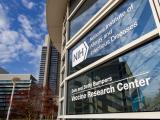Nov 8, 2007 (CIDRAP News) – The Department of Health and Human Services (HHS) recently released a guide to help communities retool their health-related call centers into systems for meeting the needs of the public in homes or shelters during emergencies such as a pandemic or bioterrorist attack.
Published by the HHS Agency for Healthcare Research and Quality (AHRQ), the 224-page guide is aimed at boosting the capabilities of poison-control centers, nurse advice lines, drug information centers, and health agency hotlines. It focuses on four main scenarios: anthrax attacks, pandemic influenza, plague, and food contamination.
"Community call centers have long been a credible source that people can turn to for health information," said AHRQ Director Carolyn M. Clancy, MD, in an Oct 26 press release from the agency. "Leveraging these existing resources will allow clinics, outpatient departments, and emergency departments to devote their attention to caring for those in most need of help."
The report was developed for the AHRQ by Denver Health, a member of the agency's Accelerating Change and Transformation in Organizations and Networks (ACTION) project, the press release said. A national advisory panel of experts in emergency call center services, public health, preparedness planning, and other fields helped draft the guidance.
Few resources exist to guide the development of emergency call centers, the report says. However, the authors were able to draw from published reports on the experiences of officials in Toronto and Taiwan during the SARS epidemic.
Guidance in the report assumes that the community infrastructure would remain intact so that call centers would be operable. Though the document doesn't address absenteeism among call-center workers, it covers features, such as interactive response systems, that might reduce the number of employees needed to staff the centers.
For communities that have little healthcare call-center capacity, the authors offer suggestions on how to enlist the help of local corporate call-center systems.
The report focuses on six response capabilities:
- Health information to augment risk communications and alleviate the burden on the healthcare system; call centers could direct callers toward medication- or vaccine-dispensing locations and answer frequently asked questions
- Disease or injury surveillance to help health officials identify emerging health threats
- Triage or decision support to reduce unnecessary hospital visits and reduce costs
- Quarantine and isolation support to those self-treating or receiving medical care in their homes
- Outpatient drug information and adverse-event reporting
- Mental health assistance and referral
Authors of the report also developed a tool set to enable public health officials to assess the call-center demand they would face during a public health crisis and what resources they would need to meet it. The set includes checklists and Microsoft Excel worksheets.
See also:
Oct 26 AHRQ press release
http://archive.ahrq.gov/news/press/pr2007/callctrpr.htm
AHRQ report on adapting call centers for crisis support
http://archive.ahrq.gov/prep/callcenters/



















